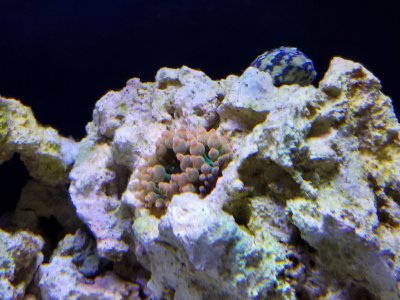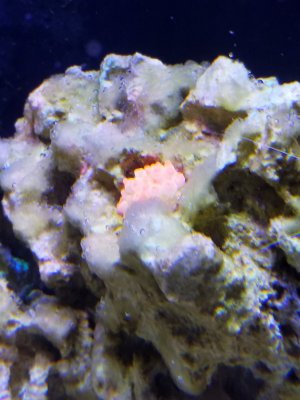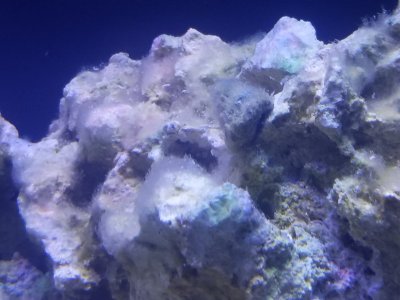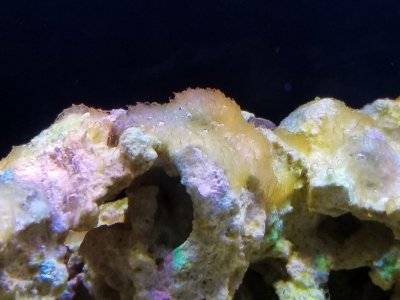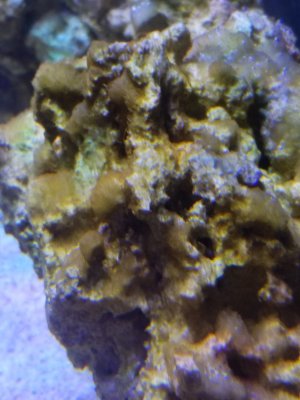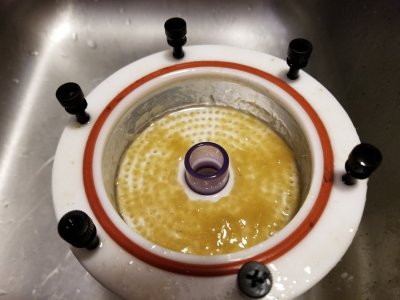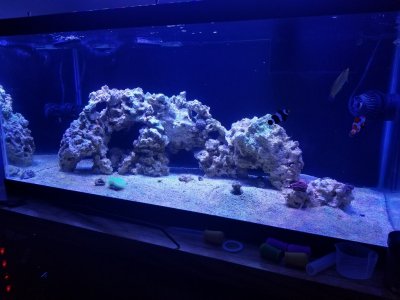Hello guys,
I have been battling white slime for about 6 months and I am about to throw the towel on the hobby because of this nasty thing.
In March of this year I set up my second saltwater tank (about 75G) from scratch and I immediately got this weird bacteria bloom (cloudy water) even before adding the salt. I did not pay too much attention to it - having been in the freshwater hobby for many years, I had seen many bacteria blooms - so I just popped in my UV sterilizer and thought nothing of it.
I then added the dry rock, some snails and some easy coral from my other tank along with nitrifying bacteria and waited for the cycle to start. In less than 2 weeks, I got this stringy white mucus and after doing some research, I understood I have white slime - some say it's a bacteria named Alcaligenes Faecalis, other say it's an unknown fungus - I do not know, but I think it is a bacteria.
What I do know is that nothing I have tried worked, namely:
- manual removal
- water changes (did not expect them to work, but tried it anyway)
- UV sterilizer
- Dr Tim's Waste Away + other probiotic bacteria brands
- antibiotics
- hydrogen peroxide (kills it but it comes back)
- Salifert Flat worm exit (saw this on youtube at reefgrrl and thought I might give it a try)
- you name it, I even put yeast in the tank at one point
During these months I of course infected my other tank by accident and now both my tanks have it. The other tank is an older established tank so it's not so bad there as in the new one, but corals are starving due to this bacteria.
At times it seems to go away for a couple of days but it always comes back with a vengeance.
The problems with it are as follows:
- consumes oxigen, I already lost 2 fish in one episode (but fortunately this only happened once)
- unsightly
- water is permanently cloudy or with particles in it
- clogs up any mechanical filtration in a matter of hours
- consumes every bit of NO3 and PO4 and leads to coral starvation (for example in my new tank which is now 6 months I have never seen not one strand of any kind of algae as this bacteria outcompetes everything, I sometimes think it even feeds on the filter floss;
in my other tank no3 and po4 levels dropped to zero and remained there no matter what I do, I even started dosing no3/po4 but all I accomplished is only more white slime).
What you see in the following videos is 2 days worth of growth, I am cleaning it basically everyday now but getting very very tired and sometimes I think about putting bleach in the tank so that I can get rid of it once and for all)
Any help is highly appreciated.
I have read all I can read. There is no carbon dosing in the tanks nor any air freshner inthe room etc. We do use some alcohol disinfectant in an adjacent room due to the pandemic, but I have made an experiment where I fed it alcohol in a beaker and it did NOT grow so I do not know.
I have been battling white slime for about 6 months and I am about to throw the towel on the hobby because of this nasty thing.
In March of this year I set up my second saltwater tank (about 75G) from scratch and I immediately got this weird bacteria bloom (cloudy water) even before adding the salt. I did not pay too much attention to it - having been in the freshwater hobby for many years, I had seen many bacteria blooms - so I just popped in my UV sterilizer and thought nothing of it.
I then added the dry rock, some snails and some easy coral from my other tank along with nitrifying bacteria and waited for the cycle to start. In less than 2 weeks, I got this stringy white mucus and after doing some research, I understood I have white slime - some say it's a bacteria named Alcaligenes Faecalis, other say it's an unknown fungus - I do not know, but I think it is a bacteria.
What I do know is that nothing I have tried worked, namely:
- manual removal
- water changes (did not expect them to work, but tried it anyway)
- UV sterilizer
- Dr Tim's Waste Away + other probiotic bacteria brands
- antibiotics
- hydrogen peroxide (kills it but it comes back)
- Salifert Flat worm exit (saw this on youtube at reefgrrl and thought I might give it a try)
- you name it, I even put yeast in the tank at one point
During these months I of course infected my other tank by accident and now both my tanks have it. The other tank is an older established tank so it's not so bad there as in the new one, but corals are starving due to this bacteria.
At times it seems to go away for a couple of days but it always comes back with a vengeance.
The problems with it are as follows:
- consumes oxigen, I already lost 2 fish in one episode (but fortunately this only happened once)
- unsightly
- water is permanently cloudy or with particles in it
- clogs up any mechanical filtration in a matter of hours
- consumes every bit of NO3 and PO4 and leads to coral starvation (for example in my new tank which is now 6 months I have never seen not one strand of any kind of algae as this bacteria outcompetes everything, I sometimes think it even feeds on the filter floss;
in my other tank no3 and po4 levels dropped to zero and remained there no matter what I do, I even started dosing no3/po4 but all I accomplished is only more white slime).
What you see in the following videos is 2 days worth of growth, I am cleaning it basically everyday now but getting very very tired and sometimes I think about putting bleach in the tank so that I can get rid of it once and for all)
Any help is highly appreciated.
I have read all I can read. There is no carbon dosing in the tanks nor any air freshner inthe room etc. We do use some alcohol disinfectant in an adjacent room due to the pandemic, but I have made an experiment where I fed it alcohol in a beaker and it did NOT grow so I do not know.
Last edited:









